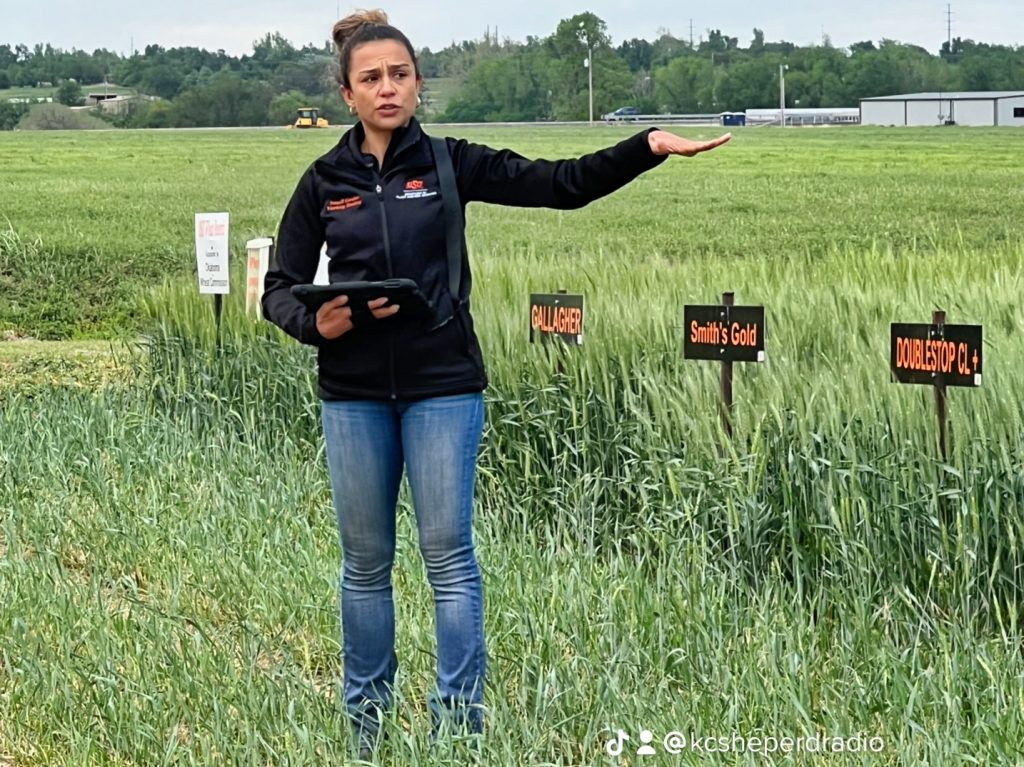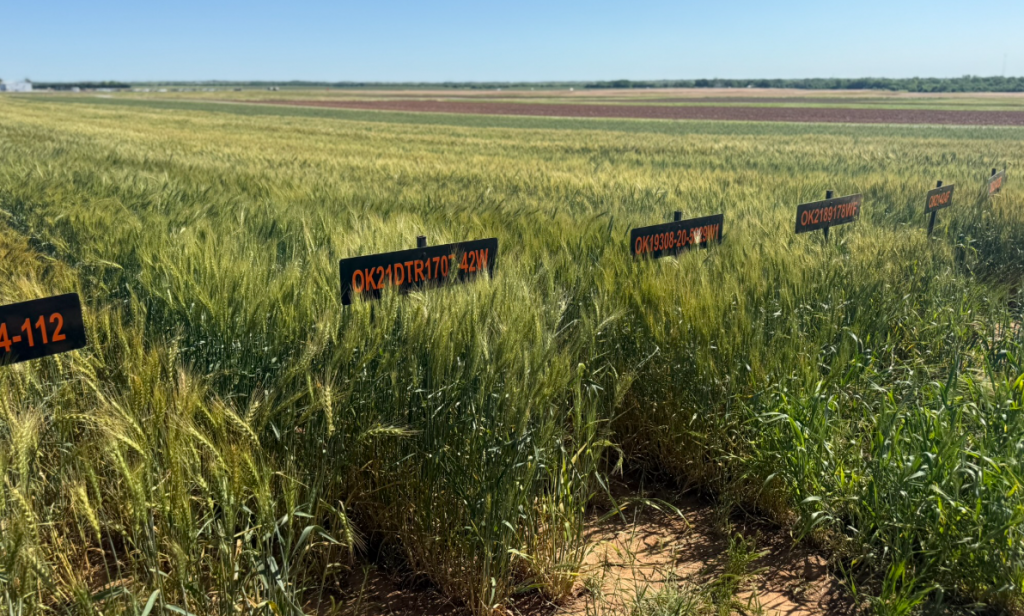
Dr. Amanda Silva, OSU Extension Small Grains Specialist, described the 2024 wheat season as one of the most chaotic in recent memory. “It’s been a really messy year for our wheat growers,” she stated. The season began with drought conditions in the fall, shifted into heavy rains by November causing “some stand issues, some flooding,” and cycled back into drought followed by excessive rainfall again in April. The volatility in weather created inconsistent field conditions and delayed progress throughout the growing season.
When asked about the most significant challenge for producers, Dr. Silva emphasized it wasn’t just one factor, but poor timing of all of them. “The time that we really needed that rain, we were under drought and that drought delayed our planting,” she explained. This led to “a lot of late plant” wheat and limited forage availability in the fall. Then, in the spring, heavy storms complicated harvest efforts. “All that rain, those storms was trouble, especially for us to try to get that wheat out of the field,” she said.
Harvest timing became a major concern, with moisture and soggy field conditions preventing access. “The wheat was ready to be harvested, but the ground was so wet,” she noted. Rain kept returning before the ground could dry, and “we started cutting wheat maybe two weeks after normal.” This created fears of pre-harvest sprouting and quality losses. “There is a lot of fear that we’ll get sprouting the wheat is going to start germinating while it’s still in the head,” which can lower test weight and grain quality.
Despite those concerns, Dr. Silva was relieved that the state avoided widespread sprouting issues. “Luckily, we really didn’t have much sprouting going on in the state,” she said. However, test weights did suffer in some locations, especially where wheat sat in the field for weeks. “We see that on test weight reflecting a much lower test weight,” she explained, but overall protein levels remained solid: “I think protein, that 12% average, that was good.”

Looking at yields, the results were mixed but not all bad. “I was a little bit surprised in some of the locations,” she said, noting better results in the northern part of the state. In Lahoma, for example, “we got outstanding yields in both of the management practices that we test.” Dual-purpose plots in Arena also performed well under grazing pressure. However, she also acknowledged tough losses: “We had to terminate some plots which just reflects the reality of our state.” Overall, Dr. Silva’s recap captured a year of extreme variability, with both bright spots and serious challenges.
To see all the Current Wheat Harvest Results and Trial Locations, click here:

















